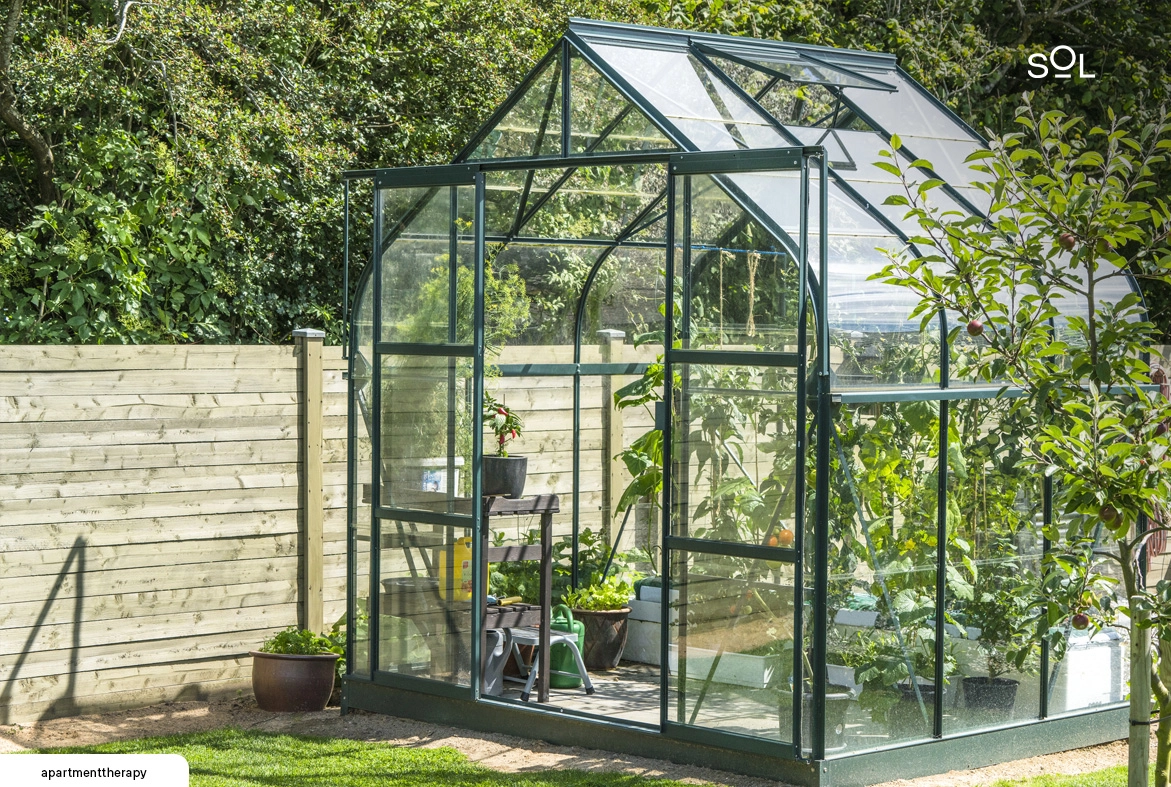Hello Green-Thumb Enthusiasts!
Today, we’re embarking on an exciting journey to build a DIY backyard greenhouse. This blog post is for you if you have always desired to grow your greens but find yourself limited by space. With a small backyard greenhouse, you can enjoy the freshness of home-grown produce and do it in style!
But let’s first discuss why a greenhouse is a valuable addition to your backyard?
Why Should You Build a Greenhouse?
You are here, so you must be interested in building a greenhouse, but let’s face it, building a greenhouse and maintaining its inhabitants, those lovely green friends, will take work. Having a list of solid benefits will only give you consistent motivation to keep going with the project and maintain interest as things get challenging. Here is our roundup of the top 5 reasons to build a greenhouse in your small backyard.
Mental Health Benefits
Gardening is scientifically proven to be a mental health intervention method. A 2013 research paper by Jane Clatworthy et al. published in the Mental Health Review Journal presented “evidence in support of gardening-based interventions.” If you are someone who suffers from anxiety and depression, gardening can bring you immense benefits.
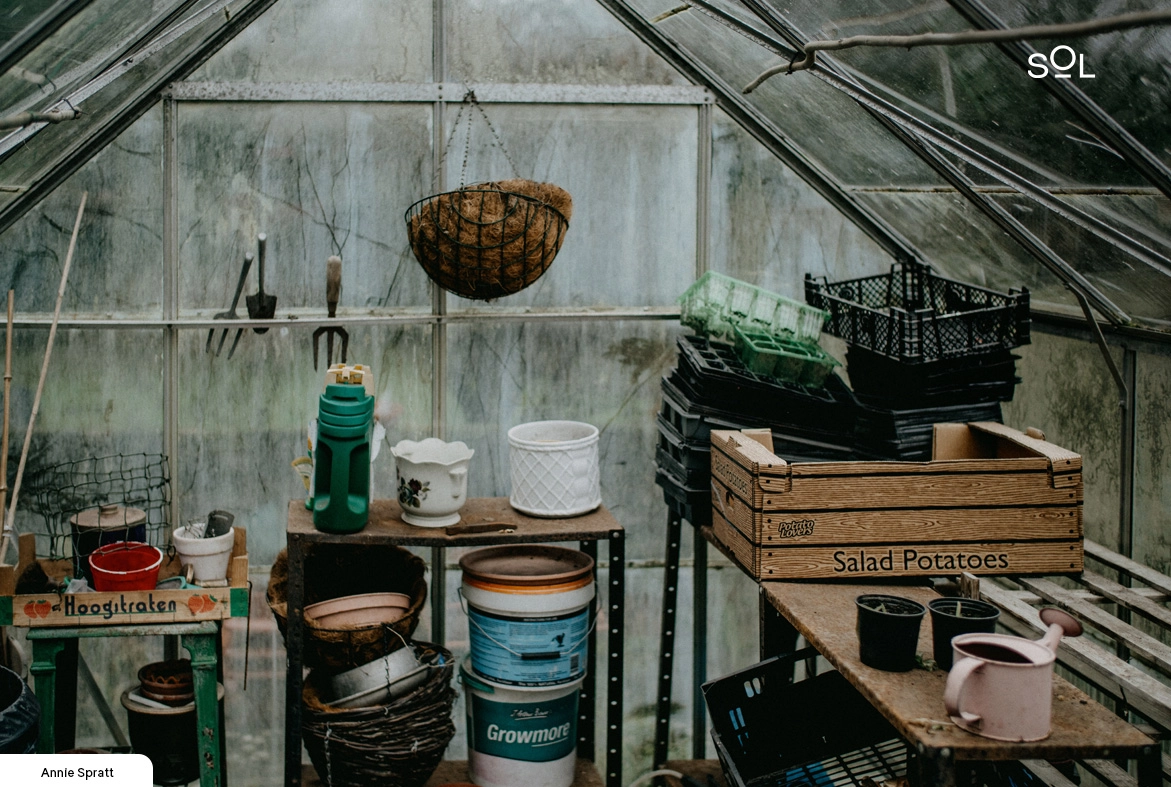
Year-round Gardening
A greenhouse creates a microclimate, offering a warm environment that can keep plants growing even when it’s freezing outside; that’s why a small backyard greenhouse will allow you to extend your gardening season or even garden year-round.
Space Optimization
Building a greenhouse in a small backyard allows you to make the most out of your limited space. A small nook that would have been left empty can be used as a garden. With careful planning, you can grow a surprising amount of produce or flowers in a small area.
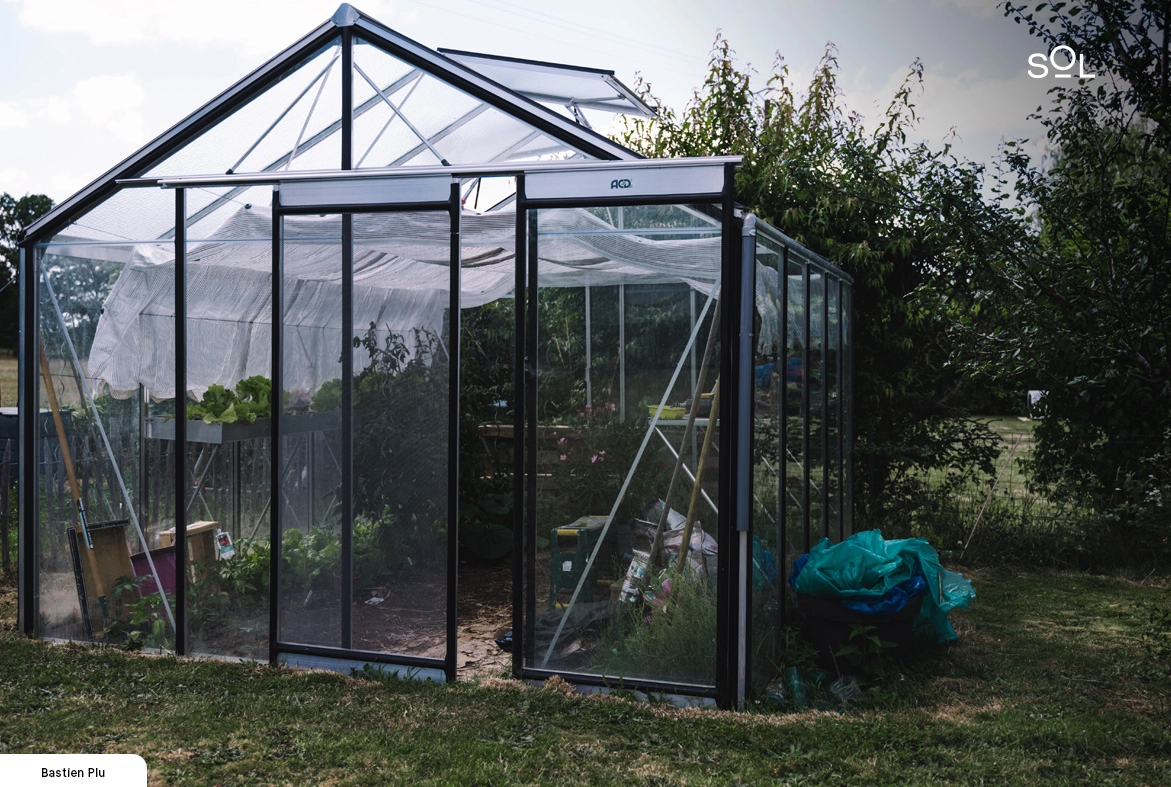
Aesthetic Appeal
Greenhouses are not just functional; they’re also beautiful. A well-designed greenhouse can add charm and aesthetic appeal to your backyard. You can add modern outdoor furniture around your greenhouse and relax or entertain in your beautiful backyard.
Relaxing Environment
Who said only plants could chill in a greenhouse? We say you can hang out with your leafy friends too. By adding outdoor furniture for a small patio inside your greenhouse, you can use it as an outhouse during the gloomy winter months as well. This will also protect outdoor furniture from falling prey to weather-induced wear and tear.
Backyard Greenhouse Ideas: Things to Consider
The thought of building a backyard greenhouse may appear intimidating at first, but you will be surprised how approachable it can be. Start small and watch your greenhouse flourish from there. Even the tiniest spaces can be ingeniously converted into a rich, life-brimming ecosystem. But before you delve in head first, here are a few things to consider.
Attached vs. Detached
There are many ways a backyard greenhouse can be structured. You need first to figure out whether you want an attached structure or a freestanding detached one. The choice largely depends on a few factors, such as
- The space that you have available
- The layout of your backyard
- The orientation of the space with respect to the sun
- The type of gardening you want to do in it
Usually, for a small space, an attached greenhouse works better as it may take up less space, neatly tucked away beside your existing building. However, a detached one would be your best bet if the sun is obscured from that point. Moreover, if the intention is to put raised beds and potted plants in the greenhouse, building onto a patio with an attached structure would be a good idea as it will save you bucks on laying a new foundation.
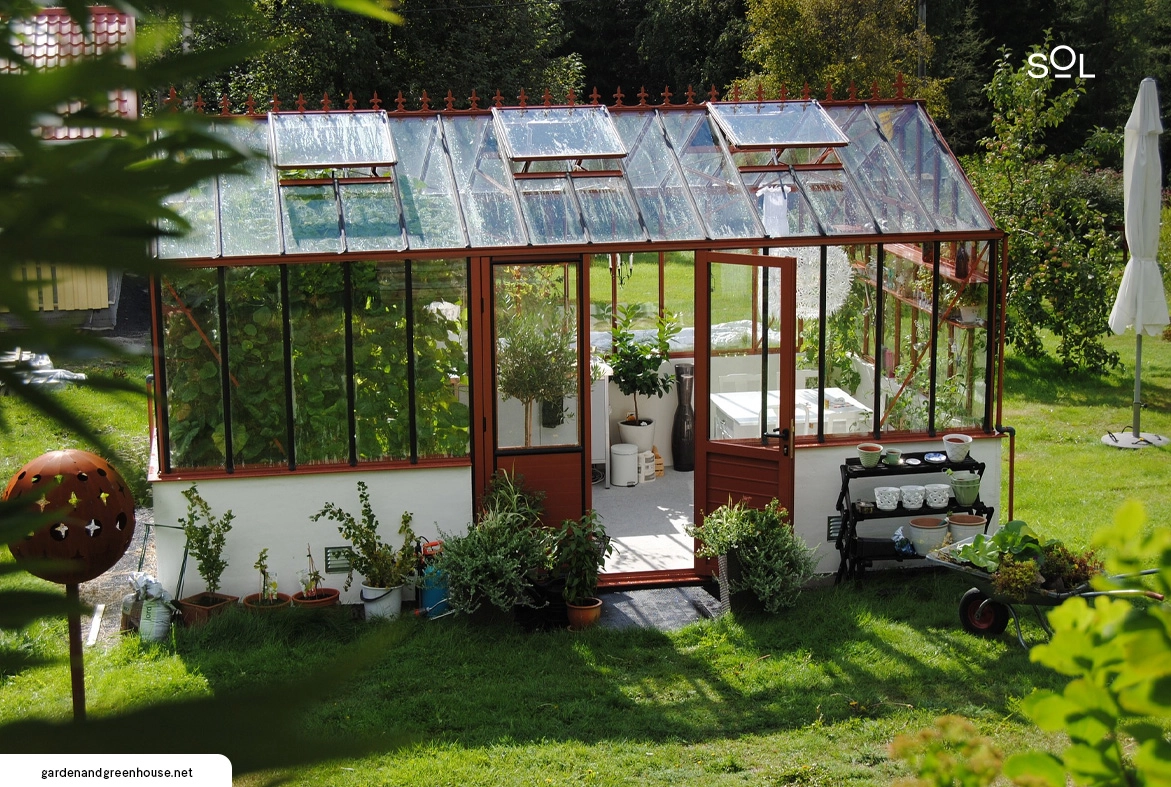
Orientation
If you’re in North America and setting up a greenhouse, pointing it south or southeast is your best bet. Why, you ask? Well, in chillier areas, the warmth of the early morning sun is super important for your plant’s growth, and a south-facing orientation is best to catch the rising sun. Even an east-facing greenhouse can do the trick, especially if you’ve got some windows catching those early morning rays. Just a heads-up, try to avoid a Western orientation – it can get way too hot, and that’s not what you want for your green pals!

Size and square footage
When determining the best size and square footage for a small backyard greenhouse, several factors come into play:
- Available Space: Measure your backyard and determine how much space you are willing to allocate for the greenhouse. Remember to allow space for paths, water sources, and additional areas around the greenhouse for maintenance access and ventilation.
- Purpose of the Greenhouse: A smaller greenhouse (around 50 square feet) may be sufficient if you plan to grow a few plants or start seedlings. You might need a larger structure (at least 100 square feet or more) to grow vegetables year-round. If you are still deciding what you want to plant in the greenhouse, check out this blog post by Forbes. When buying outdoor furniture to put in your greenhouse, make sure to go for compact or convertible options to save space.
- Plant Size and Spacing: Consider the types of plants you want to grow and their spacing needs. Some plants, like tomatoes, need more space to grow than others. You need comparatively less space if you plan to make a herb garden.
- Budget: Larger greenhouses will cost more due to increased material requirements. It’s important to factor in not only the cost of the structure itself but also ongoing costs such as heating and cooling. Some very affordable greenhouse kits exist, but you can always DIY from salvaged materials.
- Local Building Codes and Regulations: Check local zoning laws, as there might be restrictions on the size of structures you can build in your backyard.
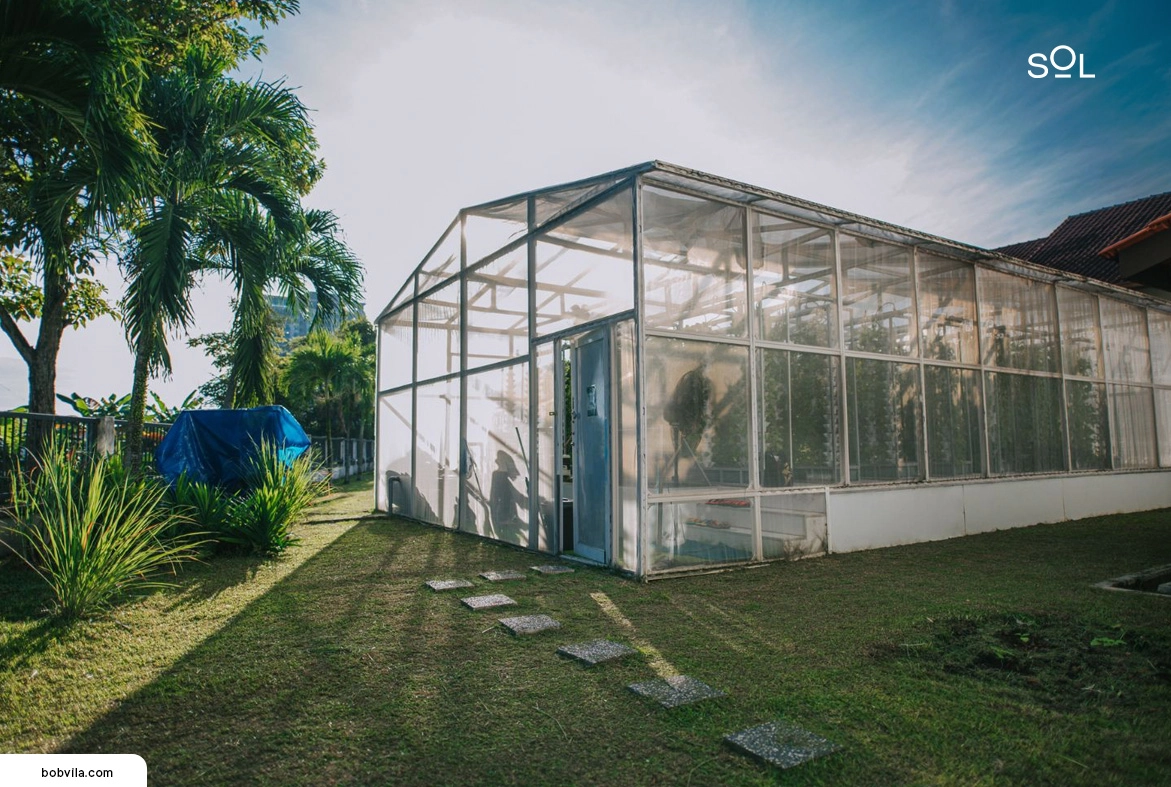
DIY Greenhouse vs. Greenhouse Kits
Let’s compare the two options for a DIY backyard greenhouse.
DIY Greenhouses from Salvaged Materials
Pros
- Cost-Effective: Utilizing salvaged materials can significantly reduce the cost of building a greenhouse.
- Creative Freedom: You can customize the design based on available materials, allowing for unique and personalized structures that can’t be replicated with kits.
- Environmentally Friendly: DIY-ing using salvaged materials is a fantastic way to recycle and repurpose materials that might otherwise end up in a landfill, making it a more sustainable choice for the environment.
Cons
- Time and Effort Required: Sourcing usable salvaged materials, designing, and constructing a greenhouse can be time-consuming and require significant manual labor.
- Stability: The quality and durability of salvaged materials can vary greatly, which might affect the longevity or stability of the greenhouse. Plus, it can’t be unassembled and moved around as easily.
- Lack of Instructions: Unlike kits, DIY projects do not come with step-by-step instructions, which might be challenging for beginners without carpentry skills.

Greenhouse Kits
Pros
- Easy to Assemble: Greenhouse kits come with all the necessary parts and a detailed manual, making them relatively easy to assemble, even for beginners. It can also be unassembled and moved around the yard or elsewhere.
- Quality: The materials included in a kit are specifically designed for greenhouse construction, ensuring durability and appropriate light transmission.
- Variety: Kits come in a wide array of designs, sizes, and materials, allowing you to choose one that fits your backyard aesthetics and gardening needs.
Cons
- Higher Costs: Greenhouse kits can be more expensive than DIY alternatives, especially higher-end models.
- Less Customizable: Although kits come in various styles, they do not offer the same level of customization as building from scratch.
A DIY greenhouse from salvaged materials can be a cost-effective, environmentally friendly choice that offers creative freedom but requires more time and effort. On the other hand, Greenhouse kits are easy to assemble and guarantee consistent quality, but they may be pricier and less customizable.
In conclusion, a small backyard greenhouse is a perfect way to convert limited space into a lush, green oasis. Building a backyard greenhouse isn’t as complex as it seems, and with the right outdoor furniture, you can transform your little space into a picturesque sanctuary where you can unwind and relax. So start planning, and before you know it, you’ll have your very own garden retreat!
